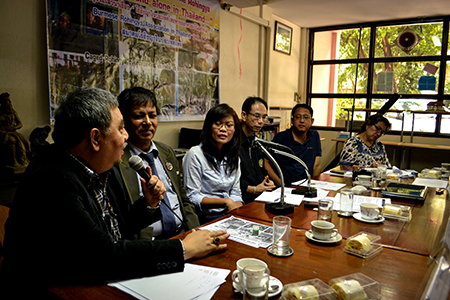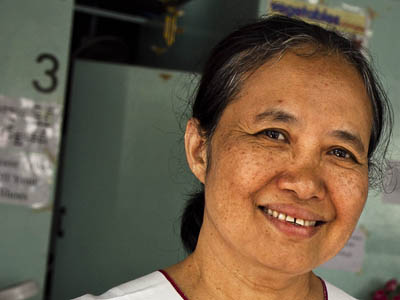Working environment
Myanmar's political environment has been marked by the transition from military rule to a civilian Government in 2011. The change was underpinned by a historic dialogue between President Thein Sein and Aung San Suu Kyi, whose National League for Democracy won 43 out of 45 seats in April 2012 by-elections. The United States of America and the European Union have responded by either lifting or suspending most of their economic sanctions.
Though the new Parliament agreed to consider looking into a proposal to draft a new citizenship law and revoke the current Myanmar Citizenship Law, which could improve the status of a large group of residents in Rakhine State and other people without citizenship in the country, the Government's response was a reiteration of current policies. UNHCR foresees a continuing need to assist some 800,000 residents of Rakhine State without citizenship. Members of this group were allowed to vote in the November 2010 elections, using temporary registration cards issued by the Government. However, discussions on replacing the temporary documents with cards denoting more permanent residential status, if not full citizenship, have not yielded results. There has been no improvement in the legal status or living conditions of this particular group in Rakhine State.
Inter-communal violence which erupted in Rakhine State in June 2012 has forced some 75,000 people to flee their homes. UNHCR leads the humanitarian response to this situation in four sectors: protection, shelter, camp coordination and camp management (CCCM) and non-food items (NFIs).
UNHCR will also assist those without citizenship in other parts of Myanmar. In this regard, the first national census in 31 years (to be implemented in 2014) will serve as an important source of information. UNHCR also envisages conducting a survey on statelessness in Myanmar.
In south-eastern Myanmar, UNHCR supports some 239,000 people affected by displacement through protection monitoring and advocacy with the Government for improved access to essential services. In 2012, UNHCR was able to expand its operational area in this region, allowing it to gain access to more than 100,000 individuals in need of assistance and some 2,000 spontaneous returnees from Thailand.
A ceasefire between the Government and the forces of the Kachin Independence Organization broke down in 2011, and hostilities continue. As a result, more than 75,000 people - mostly women and children - have fled their homes and villages. Since September 2011, UNHCR has been leading the emergency response in Kachin in the protection, shelter, CCCM and NFI sectors.
The needs
Lack of citizenship and enjoyment of basic rights, plus restrictive policies and discriminatory practices by local authorities, are the main protection and livelihood problems faced by Muslim residents of Rakhine State. Essential services such as health care, water, sanitation and education are woefully inadequate and in most cases non-existent.
Fostering peaceful coexistence between communities and enhancing the participation of women and girls in decision-making within their communities are priorities for UNHCR in Rakhine State. UNHCR will need to provide the most vulnerable households with NFIs and basic shelter. Advocacy and awareness-raising will aim to reduce statelessness in a large segment of the population.
Provision of basic support, through the four sectors of intervention, to the displaced population in Kachin State remains a key priority for UNHCR. While overall displaced population numbers are expected to remain stable, UNHCR will also continue to closely monitor the potential to support return to their homes of displaced populations in Kachin State, if such opportunities arise.
In the south-east, UNHCR works to improve the coping mechanisms of communities affected by displacement. There is a need for basic services such as health, water and sanitation, as well as NFIs and shelter. Years of conflict have weakened community self-management structures, which need strengthening. Through an expanded presence and new partnerships with local NGOs, UNHCR will monitor this population, raise protection concerns with the authorities and provide legal assistance where necessary. An improved data collection and management system will assist in the latter.
Main objectives and targets for 2013
|
| TYPE OF POPULATION | ORIGIN | JAN 2013 | DEC 2013 |
|---|
| TOTAL IN COUNTRY | OF WHOM ASSISTED
BY UNHCR | TOTAL IN COUNTRY | OF WHOM ASSISTED
BY UNHCR |
|---|
| Total | 1,616,840 | 417,000 | 1,768,640 | 500,000 |
| Returnees (refugees) | Myanmar | 2,000 | 2,000 | 50,000 | 50,000 |
| IDPs | Myanmar | 429,200 | 165,000 | 450,000 | 200,000 |
| Stateless people | Stateless | 1,185,640 | 250,000 | 1,268,640 | 250,000 |
Favourable protection environment
Laws to aid people without citizenship are developed or strengthened.
Statelessness is reduced or prevented through advocacy, monitoring and the provision of training to the authorities.
Fair protection processes and documentation
The quality of profiling is improved.
Some 50 per cent of displaced people in operational areas are monitored and their needs and protection concerns assessed.
Security from violence and exploitation
The risk of sexual and gender-based violence (SGBV) is reduced and the response to it is improved.
Some 80 per cent of reported victims of SGBV receive assistance.
Basic needs and essential services
The supply of potable water is maintained or increased.
At least 20 litres of clean drinking water are provided per person per day among displaced and host communities that can be accessed by UNHCR.
The population has optimal access to education.
Enrolment at the primary level increases to 95 per cent.
The literacy rate rises to 30 per cent.
Up to 60 per cent of children aged 3-5 attend early childhood development classes.
Shelter and infrastructure are established, improved and maintained.
Emergency shelter meets Sphere Standards.
Services for people with specific needs are strengthened.
Assistance is provided to most vulnerable individuals.
The population has an adequate supply of basic and domestic items.
Individuals and families receive relief supporting all areas where UNHCR provides emergency response.
The population benefits from satisfactory sanitation and hygiene.
Women receive sanitary materials in all areas where UNHCR provides an emergency response.
Community empowerment and self-reliance
Community mobilization is strengthened.
At least 50 per cent of community leadership structures comprise women, and community leaders and members receive life-skills and leadership training.
Local communities coexist peacefully.
Tensions between the different communities decrease.
The participation of women and girls in decision-making is increased through the use of inter-ethnic community centres as venues for community leadership training, and literacy and computer classes.
Strategy and activities in 2013
In line with the implementation of the UN Strategic Framework for Myanmar (2012-2015) and its leadership of the national protection working group, UNHCR will address a range of issues relating to statelessness and displacement. It will advocate for the Government to grant citizenship to affected populations, recognize its responsibilities towards communities affected by displacement, and lift restrictive legal and administrative practices.
UNHCR will continue its efforts to enhance and deepen dialogue with the new Government in 2013, while also strengthening partnerships with civil-society groups, academic institutions and local and international NGOs. It will work with these groups to improve conditions for communities affected by displacement, returnees and populations without citizenship.
Protection monitoring, advocacy and capacity building will be complemented by improvements in basic services such as water, sanitation, health and education. Special emphasis will be placed on strengthening community leadership structures, peaceful coexistence between ethnic groups, and the participation of girls and women in decision-making.
Constraints
UNHCR's planned activities in Myanmar are based on the assumption that a constructive dialogue with the authorities and targeted development and infrastructure programmes will create more humanitarian space.
In south-eastern Myanmar, the lack of reliable statistics poses a variety of challenges for UNHCR, as does the remoteness of areas affected by displacement. The thin presence of humanitarian agencies in the region also makes it difficult to reach all those in need of assistance. In Kachin, limited access to all areas hinders implementation of activities as well as access to people of concern.
In Rakhine State, the continuous inter-communal tension and instability seriously hinder access, and limit effective implementation of assistance activities for the internally displaced population as well as the resumption of the 2012 programme in the northern part of Rakhine State.
Organization and implementation
Coordination
Given its lead sectoral responsibilities in three operational areas, UNHCR maintains close relations with UN agencies, NGOs and central and regional authorities. It hosts regular inter-agency meetings in the field and in the capital, and in 2011 established a protection working group in northern Rakhine State.
UNHCR also provides an operational umbrella for several implementing agencies with which it has formal agreements in Myanmar. It participates in the monitoring and reporting mechanism under the UN Security Council Resolution 1612 on Children in Armed Conflict. In the inter-agency response to the Kachin and Rakhine emergencies it serves as the lead agency for the protection, shelter, CCCM and NFI sectors.
Financial information
UNHCR's budget for Myanmar has risen steadily in recent years. Since 2009, UNHCR has allocated additional resources to assist the population without citizenship in northern Rakhine State in five priority sectors that are also supported by the Government. This continued in 2011, with additional funds being allocated for assistance to victims of two natural disasters in Rakhine State.
The budgets also went up in 2011 and 2012, due to increased requirements for displaced people in Kachin and Rakhine States and south-eastern Myanmar. Owing to the new IDP emergencies and the expansion in the area of coverage in the south-east in 2012, the 2013 budget will be revised to address the additional needs.










